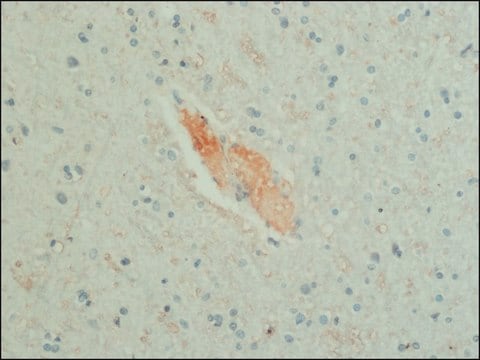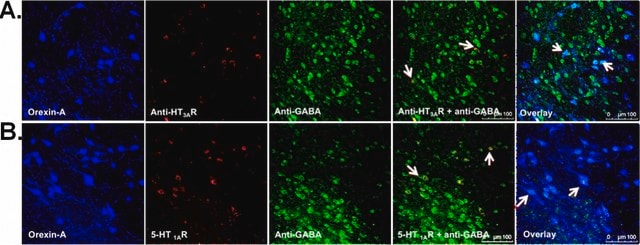G5419
Anti-GAD1/GAD2 Antibody
mouse monoclonal, K-87
Sinónimos:
Anti-GAD 67
Seleccione un Tamaño
558,00 €
Seleccione un Tamaño
About This Item
558,00 €
Productos recomendados
Nombre del producto
Monoclonal Anti-Glutamic Acid Decarboxylase 67 (GAD67) antibody produced in mouse, clone K-87, purified antibody
origen biológico
mouse
Nivel de calidad
conjugado
unconjugated
forma del anticuerpo
purified antibody
tipo de anticuerpo
primary antibodies
clon
K-87, monoclonal
mol peso
antigen 67 kDa
reactividad de especies
rat, mouse, human
concentración
~1 mg/mL
técnicas
immunohistochemistry (formalin-fixed, paraffin-embedded sections): 1:500-1:20,000 (with antigen-retrieval step)
western blot: 1:500-1:20,000 using mouse brain extract
isotipo
IgG1κ
Nº de acceso UniProt
Condiciones de envío
dry ice
temp. de almacenamiento
−70°C
modificación del objetivo postraduccional
unmodified
Información sobre el gen
human ... GAD1(2571)
mouse ... Gad1(14415)
rat ... Gad1(24379)
Categorías relacionadas
Descripción general
Especificidad
Inmunógeno
Aplicación
Acciones bioquímicas o fisiológicas
Forma física
Cláusula de descargo de responsabilidad
¿No encuentra el producto adecuado?
Pruebe nuestro Herramienta de selección de productos.
Código de clase de almacenamiento
10 - Combustible liquids
Clase de riesgo para el agua (WGK)
nwg
Punto de inflamabilidad (°F)
Not applicable
Punto de inflamabilidad (°C)
Not applicable
Equipo de protección personal
Eyeshields, Gloves, multi-purpose combination respirator cartridge (US)
Elija entre una de las versiones más recientes:
Certificados de análisis (COA)
¿No ve la versión correcta?
Si necesita una versión concreta, puede buscar un certificado específico por el número de lote.
¿Ya tiene este producto?
Encuentre la documentación para los productos que ha comprado recientemente en la Biblioteca de documentos.
Los clientes también vieron
Filtros activos
Nuestro equipo de científicos tiene experiencia en todas las áreas de investigación: Ciencias de la vida, Ciencia de los materiales, Síntesis química, Cromatografía, Analítica y muchas otras.
Póngase en contacto con el Servicio técnico















